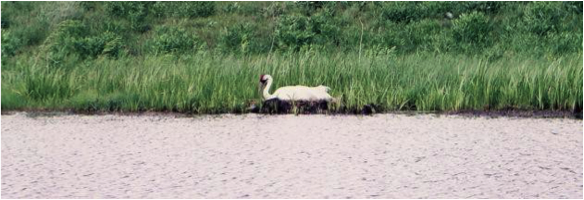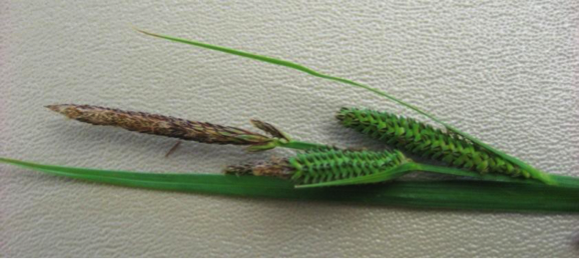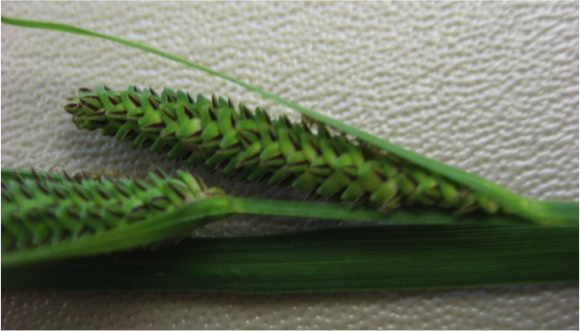Sedges, what good are they?
Ask a pair of whooping cranes that found a new home along a restored wetland along an Illinois River. A flock of 60 whooping cranes that usually migrated through had found a new sedgy habitat and some stayed and built nests of sedge leaves!

The farmers along 11 sites in Illinois were paid to take their flood prone croplands and restore them back to their original function of accepting spring floodwater. The NRCS Recovery Act offered funding to the landowners through the Emergency Watershed Protection-Floodplain Easement Program (www.il.nrcs.usda.gov).
The results? Sedges and other wetland plants grew and waterfowl flew in and stayed. After that bird watchers came and tired out, they ate at local restaurants increasing the cash flow in small towns along the river.

Back in the flood plain, birds such as the marsh wren and sedge wrens fed upon the sedge seed heads. They perched on the culms to sing their territory songs that mean “This land is my land, this land’s not your land”. Domed nests were constructed, eggs were laid, and the next generation grew up in a dry nest with a roof made of sedge leaves.
What kind of sedges? The outer structure of the nest uses rough-leaved scabrous edged sedges, like C. lacustris, also known as “rip-gut” for it’s sharp skin- cutting edges. C. pellita, woolly sedge, was named for its fuzzy sacs around its tiny seed-like achenes. C. buxbaumii, purple-scaled sedge is one of the prettier sedges in sedge meadows, and has purple and green seed heads.

[Linda is author of two books on sedges (Carex). You can find out more at her website]
Supplemental information
Ellen Starr, a Biologist with The Natural Resources Conservation Service generously offered information on Illinois habitat restoration efforts. She notes, “Sedge seeds persist in the seed bank for many decades since they have a hard seed coat, so the endemic species will naturally regenerate on site. The species selection depends on what remnant species are found on site, what type of wetland is being restored and sometimes cost driven… Fox sedge is very common for many wetland types and the Tussock sedge is good for the wet meadow sites.”
Ellen also provided a list of wetland tolerant grasses and sedges used in habitat restoration: blue joint grass (Calamagrostis canadensis), fowl mannagrass (Glyceria striata), prairie cordgrass (Spartina pectinata), rice cutgrass (Leersia oryzoides), common rush (Juncus effusus), Torrey’s rush (Juncus torreyi), Bebb’s sedge (Carex bebbii), bottlebrush sedge (Carex hystericina), fox sedge (Carex vulpinoidea), lake bank sedge (Carex lacustris), pointed broom sedge (Carex scoparia), tussock sedge (Carex stricta), woolgrass (Scirpus cyperinus).
Carex stricta (tussock sedge) photos below by Andy Olnas.


